After 5 days in Naples, Bee and I moved to the relative tranquility of Sorrento, on the Bay of Naples, on the Amalfi Peninsula, and the gateway to the Amalfi Coast and Capri. We had ten more days to explore this part of Italy, rich in History, Art and Nature.
We went to Capri on our first day there – the weather forecast was not ideal for the week to come and we thought we wanted to take advantage of a reasonable day to explore the island.
Unfortunately, two cruise ships had arrived overnight, and all passengers from the ships were also going to Capri. Our ferry into the island was full and we could not get the return trip we wanted, so had a return earlier than we wanted initially.
Still, the day started positive – we booked a boat trip around the island, which included a visit to the Blue Grotto and wandered around the harbor while waiting for the departure. It was very interesting to see that even though this is a very touristy island, there are still people here doing traditional work, such as fishing out of small boats.
Here is a general view of the main harbour. On the side of the mountain in the background, you can see the first few houses of the second town in Capri called Anacapri.
Taxis on the island have been somewhat modified to cater to the expectations of local tourists. It is obvious that the maximum expected speed on the island is very low, or this type of roof on a car would not survive very long.
On the trip around the island, we first passed by the Blue Grotto. We were told that unfortunately the tide and the wave were too high to be able to visit the grotto that day. The entrance is very tight and it is often impossible to go through. However, it looks like some people are making it, so I am not sure if the boat captain was telling us the truth or not.
At the Western tip of the island, on Punta Carena, stands a very tall light house. It is critical to mark the entrance to the Bay of Naples where there has been a busy port for many centuries.
Again, we can see that normal life continues around tourism – this gentleman was fishing probably in the same way they were doing it 100 and 500 years ago!
There are several other caves around the island, not as well known and spectacular (I guess) as the Blue Grotto. This is the Green Grotto – not sure why – probably because White Grotto was already taken by the time this one was discovered!.
On the South side of Capri, there is the small, and very wealthy community of Marina Piccola. This is where celebrities and millionaires from around the world have their houses – several were pointed out to us, and we only have the captain’s word to go on. It is very difficult to get there, except by private boat so the area is very exclusive.
A bit further are the Isole Faraglioni, just of the coast. Nothing remarkable, except that one of them has a through passage that has become a tunnel of love. Couples are supposed to kiss as they pass through, for good luck. I hope it will work!
One of the most spectacular small grotto is the Coral Cave. There are nice stalactites above, but the claim to fame is the bright orange coral just below the water surface. Unfortunately you can only see glimpses of it, and making a decent photo from a moving boat was not easy. You will have to go see it for yourself if you want better than this!
On an outcrop, near the Northeastern corner of the island, there is a small statue of a boy welcoming visitors to his island. It is a very small statue, and therefore I have given you a closer look so you can see better. Next time you go, make sure you wave back to him.
After lunch we went to explore the parts of the island that are less frequented by tourists. We wanted to see the Natural Bridge, a very large rock arch that is about three km from the main town of Capri. As soon as we left the center of town, the crowds thinned significantly and we could finally understand why Capri has the reputation it has. Narrow lanes, under a bright sun, with spectacular views of the mountains and the sea. What more can you ask? This is probably the reason why so many people want to move to Capri, if they can afford it.
The Natural Bridge is not easy to see, and even more difficult to photograph as there is no way to get very far from it. I had to assemble 6 photos to get this sort of perspective. Nice, but I thought the highlight was the walk to get there, rather than the arch itself. Just before the arch, we spotted a very nice restaurant that is also in the Good Book (Lonely Planet) and we decided that the next time we come to Capri, we will eat there.
Back in Capri, we noticed that half the mountain above Anacapri was covered by clouds – time for a panorama.
We had to head back to Sorrento and our hotel. Visibility is very good this evening, with a better view of Mount Vesuvius than the previous evening (see previous post). The two very large cruize ships are still anchored just outside of the city; however, no risk of having any of the passengers crowding the restaurant as they will all eat their evening meal on the ship. Must be quite an undertaking getting 3000-4000 passengers off and back on the ship when they have to anchor outside like that. The ferry in the foreground is the same as the one that brought us back from Capri.
Later on, while waiting for dinner time, clouds started to cover the mountain again, and one cruise ship is already departing.
Speaking of dinner – we had the most wonderful food experiences while in Sorrento. We discovered two restaurants that we liked so much that we went there three times, each! These are listed at the end of the post together with other interesting information if you ever want to go to this part of Italy.
We could not see the sun setting from the hotel, unfortunately, so no repeat of the pictures from Gaeta (not sure if that is good or bad for you), instead a single photo of the hill that is blocking the sun. I am particularly pleased which how clearly the tall trees are outlined against the clear sky.
The next day, with walked down to Marina Grande in Sorrento. We saw several Marina Piccola and Marina Grande in several towns around here (Marina, is like the English word, Grande means Large and Piccola means Small so you draw your own conclusions as to the inventiveness of the people who named these places…) We came here for dinner twice – we tried the restaurant at the extreme left of the picture, in the pale yellow house (actually run by a coop of fishermen) and we tried the floating restaurant at the very far end of the marina past the pink house in the middle background. Both were good.
Here too there are working fishermen. This small boat had just pulled in and was unloading whatever they caught. It attracted a small crowd of mostly locals. After unloading the fish, they took on ice, and left again.
It rained for a lot of the day, so no more interesting photos of Sorrento.
That night, we had a very clear view of Mount Vesuvius, with the city lights right in front of it. This gives you a good idea of how many people live very close to the volcano and the potential danger should it decide to wake up again; remember that in the 79 AD eruption, the coast line in front of Vesuvius was extended by about 2 km and Herculaneum, which used to be right at the beach was buried under more than 15 meters of ash and mud. The red flash behind the volcano is probably from lightening as there was a thunderstorm near the top of the mountain.
We are already Sunday, and we decided to continue alternating between road trips and local visits; we also decided that Sorrento and towns surrounding it would be invaded by day tourists and we wanted to avoid that. Today, we headed early for Paestum, about 1 hour south of Salerno, near the coast south of the Amalfi Peninsula.
The place was initially occupied by the Greeks and later became an important Roman community. Is has some of the best preserved Greek temples in continental Italy. When I came here in 1969, I seem to recall that you just walked in and looked around the ruins, or what was already available of the ruins. I only remembered this temple, and two others (including the Basilica) which I will show later.
Here are the other two temples – amazing after 2-3 thousand years that they are still so well preserved.
Since we arrived early, there is only one group (of Germans) that we have to share the visit with. This is the smaller temple, but is has a unique feature. If you look carefully between the last two column on the right, you can see that inside, there are two levels of columns to support the roof. As far as I know, this is the only example of its kind where the two levels have been preserved (I have never seen another).
A general view of the site which is huge – it took us the better part of two hours to go through it and we were rushed at times because of rain. The remains in the foreground were actually foundations to what is believed to be the low cost housing estates that the Romans built in larger cities called Insulae. To the left is I believe the remains of the Terme (or Roman Baths)
A democracy needs a place where laws and regulations can be debated before being enacted. This was their parliament, where the most important people in the town would gather and discuss how to govern the city. This was also where representatives from Rome would give the general directions that these rules should follow.
Paestum is “twinned” with a Roman site in Morocco called Volubilis since 2000. Both are UNESCO World Heritage sites and this one at least (I have not been to Volubilis) definitely deserves that accolation.
Half of the old Arena is still visible. The other half is unfortunately buried under the street (a former National Road) that runs along the fence of the site. The road is now closed to traffic so there may be a chance that the rest of the Arena could be dug out soon. This is already the second Roman Arena we have seen on this trip – there will be more!
Just outside of the ruins is a new museum (it was not there the first time I came in 1969) with a lot of the treasures that have been discovered in the continuing digs around the area. There were three remarkable frescoes in one room – imagine these decorating your walls.
We had lunch not far from there, in what looked to me like a typical local beach restaurant. It was just off the beach with lots of parking under trees to provide shadow in summer. The restaurant is called Nonna Sceppa and must be quite a well known restaurant in the area as I met a person from Naples later in 2014 and when we mentioned a restaurant named Nonna Something near Paestum he knew immediately what we were talking about. We did have a very nice lunch there.
After lunch we decided to stop in Ravello, at the South-Eastern end of the Amalfi Peninsula only because of this house called Villa Rufolo.
The Villa was originally built in the 13th century and was home to several Popes and even Charles I of Anjou. Its last resident was Richard Wagner. The house itself is not the reason to come here – the gardens and the views are. Unfortunately, the clouds cover some of the view, but you can well imagine what this could be like.
There were many statues in the garden, part of a temporary exhibit; there is another one in front of the tree in the first photo. This one was quite interesting, I thought!
After Ravello, we went to Amalfi itself, right on the water. We had booked dinner there (wanted to make sure we would have a place to eat on Sunday) and so decided to spend the end of the afternoon exploring this town. I also did not want to do the coastal road on late Sunday afternoon as I figured it would be very crowded.
We stopped at the Duomo in Amalfi also known as the Catedrale di Sant’Andrea. We had to go inside as we heard that there is a statue by Michelangelo there. Since there are not many of his artworks outside of Florence and Rome, this was an opportunity not to be missed.
Inside the church, we saw stairs going down to a sub-basement. However, the gates at the entrance were closed. What we saw through the gates told us we wanted to see more and when we heard voices, we figured there had to be another entrance, so we went looking. We did not see the Michelangelo in the main church, so it had to be in the chapel below, actually the Cripta di Sant’Andrea which hosts the remains of the local saint in a silver urn under the main altar.
We found the entrance through the 13th century cloisters on the left of the main entrance of the Cathedral – if you are ever in Amalfi, remember that as you do not want to miss the cloisters nor the cripta under the main church.
The small bust above is in the church and is not by Michelangelo. The photo at the bottom above is of the chapel below the main church. I told you it was worth it.
The Bronze statue on the left is by Michelangelo – and yes, before you say anything, I am aware that Michelangelo is famous for carving marble and not bronze. So we did a little bit of extra work and this statue is actually by Michelangelo Naccherino from Florence, who was a student of the more famous Michelangelo Buonarotti (even though nobody ever uses his last name!)
We had a really nice dinner in Amalfi and then drove back, in the dark, down the most scary road I have ever seen, not that night, but later in the trip … that evening, the road was not very scary as it was not crowded, and I was driving, and I could not see how deep the ravines were on the side of the road.
The next day, we decided to stay closer to Sorrento and explore the Western end of the peninsula. We started in a small town called Sant’Agata sui Due Golfi (Saint Agatha on two gulfs – so called because it should see the Gulf of Naples and the Gulf of Salerno). The weather was not very good, but when we did arrive, we had a very good view of Capri, just off the coast. This was the best view we had, just before the clouds rolled in.
After lunch, we climbed to the top of the hill, next to a small chapel where we could admire the view. This is the view that expected us. Not quite what we had in mind or had hoped for.
It was cold, windy, rainy, and the clouds just did not move, or only very occasionally, and locally. They did give us dramatic glimpses at what the view may have looked like, but very few so we eventually gave up and returned to the hotel.
We toured Sorrento instead – we had not done that yet – and went first to the Catedrale di Sorrento. The outside is not very spectacular, but the inside is quite elaborate.
It was in May, but inside the Cathedral they still had their “Presepio” in full display. One more very elaborate nativity scene that is not just for Christmas.
Nest ot he Cathedral there is a very nice Cloister – as always, these are quite places for rest and meditation. Nice to get away from the crowd in the street, full of people just off a cruise ship who only have one day to visit Italy (actually all they are doing is ticking the box saying we have been there)!
Sorrento is traversed by two very deep gullies. One is not accessible, but the main one still is, and this is the reason why Sorrento is all up and down. Most of the town is up on cliffs dominating the sea, but some parts, including the two marinas and many restaurants are at gully and sea level.
The montage of photos below gives a good impression of just how deep the gully is. At the bottom you can see the remains of a water mill, running on the power of the stream that created the gully.
That evening, we had another really nice sunset from our Hotel.
Since we had decided to have dinner at Marina Grande, we also stopped for sunset picture in Sorrento. We found a good place to stop and were not the only ones there.
The sun came down very quickly, especially since it is still setting behind a hill. While waiting to take the last rays of light poking over the hill, I tried to make a “selfie” – I understand it is all the rage these days. However, my camera would not take the shot! Bee took a picture of me trying to do a “selfie” – I will have to ask her for permission to publish here.
The sun finally sat and we went to dinner.
The next day was “Roman” day, again. We started with Pompeii. I had never been there – when I came to Naples with my parents in 1969, we wanted to go to Pompeii but were stuck in a mighty traffic jam and ended up going only to Herculaneum. I was therefore discovering the remains for the first time.
I had been told, and I had seen photos but it is not until you get to Pompeii that you realize what an amazing place this is and how well preserved some of the 2000 year old articles actually are. We started at the Temple of Apollo with the superb statue of the god seen above.
The forum probably never looked this empty in Roman times, and also rarely now-a-days but we arrived early so that the crowds have not built up yet. Most people are still waiting to buy their tickets – we cut the lines because we had purchased our ticket on-line.
A more interesting view – there are tall trees everywhere in the ruins which add unexpected signs of life in this place that was devastated with such finality almost 2000 years ago.
There are also signs of suffering everywhere. These are some of the “plaster molds” of victims that were done when the site was excavated. Archaeologists were surprised to find voids in the lower layers of ash and pumice. When they filled the voids with plaster, they were surprised that these appear to come back to life. The plaster of the dog is particularly touching as it indicates that there were a lot more victims than we recognize, counting only the human victims of the event.
Three typical views of the old town. The top shows what remains of a bakery, with oven and flour milling stones still very much intact.
In the middle is a commercial street flanked by shops.
The bottom shows one of the rooms in the Roman Baths – amazing how the decorated ceiling and the series of statues along the wall survived all these years.
The House of the Faun, with the statue that gave the name to the house. It is a lot smaller than I thought but quite exquisite. Unfortunately, just when we were there, the hand casts a shadow on his face and I did not want to wait…
The street above shows a clear indication of why the rail roads in most of Europe have such a strange width. It is actually the width of two horse’s asses! It comes from Roman times – the carriages were mostly drawn by two horses and the wheels left a dent in the streets and ways all over Europe. Carriages in the middle ages and later continued to be built with the same width in order to fit in the ruts that had been built up over the centuries. When they built the first rail carriages, they used the same width for the axles, because that is what they were used to. And the dimension still remains today.
The most crowd we encountered was at the old brothel. We were stuck between a bus load of Chinese in front, and a bus load of German with the loudest guide I have ever heard behind us as we were waiting in line to get in. The house itself is very small and so they only let in a few people at a time. The illustrations above were drawn on the doors to the different rooms, showing what the lady inside was willing to do.
The fantastic small theater. Impossible to get a complete view of it. We rested here for a few minutes as we have already been walking for more than one hour and there is still a long way to go.
The barracks with what they expected was the soldier’s exercise grounds – this is also called Palestra Grande or large gym.
A shop – the holes were filled with the goods for sale. The signs were used for publicity and to indicate the price of goods.
In the Garden of Fugitives, a rural house on the edge of town, 13 people were recovered, whole families with children, who appear to have taken refuge here in 79 AD hoping that the eruption would be short and they would have an opportunity to escape. That opportunity never came.
The arena of Pompeii, our third Roman arena in less than a week It is very well preserved but does not appear to have the underground works so prevalent in Rome and in Pozzuoli.
We went next to Herculaneum, another city literally buried by Vesuvius in 79 AD, so much so that the new city was built right on top of the ruins, not knowing what was there before. Herculaneum was only discovered in the early 1700 and some of it has been gradually excavated. Still today, 75% of the old city remains buried under Ercolano, the modern city and the site is much smaller than Pompeii. You arrive at the old “beach” now more than 2 km from the sea. In the old boat sheds that faced the sea, hundreds of skeletons were discovered.
After descending into town, you can tell how high the layer of ash and lava is that buried everything. The modern town is on top of the wall on the right of this picture.
Here too the decoration have been amazingly well preserved. You can really get a good idea of how houses were decorated.
Above is a general view of the portion that has been excavated. It is roughly a square that goes from where I am standing to the white houses in the background and from the trees on the right to the few trees on the left.
We had set out a whole day to go to Vesuvius, not sure what to expect once we got there. We waited for a day when the sky was clear in the morning and quickly left for the summit. By the time we got to the mountain, clouds were already building and the view was becoming reduced. I had to take pictures between clouds to get anything.
But the crater was clearly visible. It is relatively quiet these days, with only small fumarols here and there. The scent of sulphur is not very strong but it is clear that there is not much living there.
We had a drink in a small bar at the top, with, I guess, a view of the whole Bay of Naples, but we had to imagine what that looks like as the clouds were definitely below us. We were in bright sunshine.
In a short moment when the clouds lifted, one could see Naples! Yes that close, yes, there are that many people living close to Vesuvius today, many more than in 79 AD and an event similar to what happened then can occur again at any time. However, Vesuvius is the most measured and observed mountain in the world. The best instruments are used to detect changes in elevation of parts of the mountain, changes in composition of the fumarols, changes in temperature of the walls of the crater and many more parameters. The hope is that the scientists will be able to give a few days notice prior to disaster – but will they be believed? What if there are false alarms before the real one?
After we came back down the mountain, we stopped at the recently discovered Villa Poppea in Oplontis which offers the best preserved decorations that I have seen in a very well preserved suburban house. It is amazing to wander around the rooms and think of what it must have been like 2000 years ago.
Gorgeous little courtyard
The next day, we made a second attempt at Capri and the Blue Grotto. We got a lot closer this time as we actually had tickets to go there until they were immediately refunded as the grotto was closed on the count of heavy rain.
Instead, we went to Anacapri – we took a taxi up the steep road and went to the Villa San Michele, former house of the Swedish doctor and writer Axel Munthe. He was doctor to the Swedish Royal Family and lived in this house for many years. His bedroom below is how I would like my bedroom to be…
He had exquisite tastes and the whole house is decorated in ancient artifacts and beautiful paintings.
The garden gnomes are better than most…
Very nice landscaping …
… and you cannot beat the view, even when it is raining.
Proof that there is wealth in Capri and coming to Capri, a couple of very nice sail boats I spotted from Anacapri.
On our last day in the Amalfi Peninsula, we decided to go visit Positano, on the Southern coast. I remembered the narrow road coming back from Amalfi and so we decided to take a more relax approach and take the bus – big mistake! The driver, who had obviously done this before, would race down hair-pin turns with millimeters of clearance on both sides of the bus, with vertiginous drops on one side and sheer mountain on the other while quietly (for an Italian) talking on the phone. Not relaxing at all for me but we got there in the end.
It is very touristy, and was getting crowded even as we walked around town. The day was not particularly good, and we had to duck into an art gallery and a few stores to escape heavy rain.
The treasure in the church is this gold color icon of a black Virgin Mary
We stopped in a small restaurant outside of town for lunch. I like their wood-fire pizza oven (with a sense of humor), Bee liked the display of chilly s and other spices.
The coast line remains spectacular, even without sunshine.
After the experience of the bus ride over, we decided to take a boat back to Sorrento at the end of the day. A much more relaxing way to get from a to b.
When we went up the Vesuvius, we took a guided tour of the top crater. Our guide indicated that the mountain was more than 3000 m tall before 79 AB and after the eruption, only 1100 m were left. Today, the mountain has risen back to about 1800 meters due to numerous eruptions including the one in 1944, the last major eruption.
I decided to make a little experiment with Photoshop. Below is what the mountain looks like today, seen from Sorrento.
Using the same base, and increasing the height to 3000 meters, here is the likely look of the mountain in 77 AD – very impressive
After the eruption, at only 1100 m, this is all that was left – nothing left to scare anyone, right…
We are at the end of a wonderful trip that has cemented a lot of memories I made many years ago.
Useful Information:
Hotels:
In Naples we stayed at Il Convento, right in the Spanish Quarter, in the center of the city. For more information see their web site here: http://www.hotelilconvento.it/
In Sorrento we stayed at the Hilton Sorrento Palace (http://www.sorrentopalacehotel.com/) a short walk outside of town, with great views as you have seen. Not the cheapest place in town, except when you can book on points like we did.
Restaurants:
In Sorrento, we really like Ghibli (http://www.chefsquillante.com/) right on the beach in Marina Grande. It is not easy to find, as you have to by-pass all the cheap tourist places and go to the small beach on the right side of Marina as you walk down to it. It is a family place where the father runs the kitchen (Chef Giuseppe Squillante), the mother runs the restaurant and the son is the Somellier (he still has a year to go to have the proper title, but he was already there for me) with excellent recommendations. We went there three separate times, that is how much we liked it.
Also in Sorrento, we discovered Il Buco (http://www.ilbucoristorante.it/?lang=en), more accessible as it is on top of the cliffs near the Teatro Tasso, down a wide staircase. The cuisine is inventive and the staff is just wonderful. We also went there three times. On our second visit we had the Chef Surprise Menu accompanied by wine! One of the best meals I have ever had.
Near Paestum and Salerno, there is Nonna Sceppa ( http://www.nonnasceppa.com) apparently well know in the are by locals as well (see text above)
There are two good restaurants in Sant’Agata sui Due Golfi. Don Alfonso 1890 has a very good reputation in the whole area, but we could not go there as it was closed the day we visited. Instead we went to Lo Stuzzichino and this was very good.
Other Information
If you want to go to Pompeii, you really should consider getting the Pompeii App for iPad. It is really well done and well worth the cost to purchase it. There are details of the most important monuments, suggested walks, good site plans and really all around good information. I used the App while writing the comment in the Blog to remind myself of what was what. You should also get the combined ticket for Pompeii, Herculaneum and three smaller sites. This is how we discovered Villa Poppea in Oplontis – it is not that well known, but a definite must for visitors.
(770 Page Views)

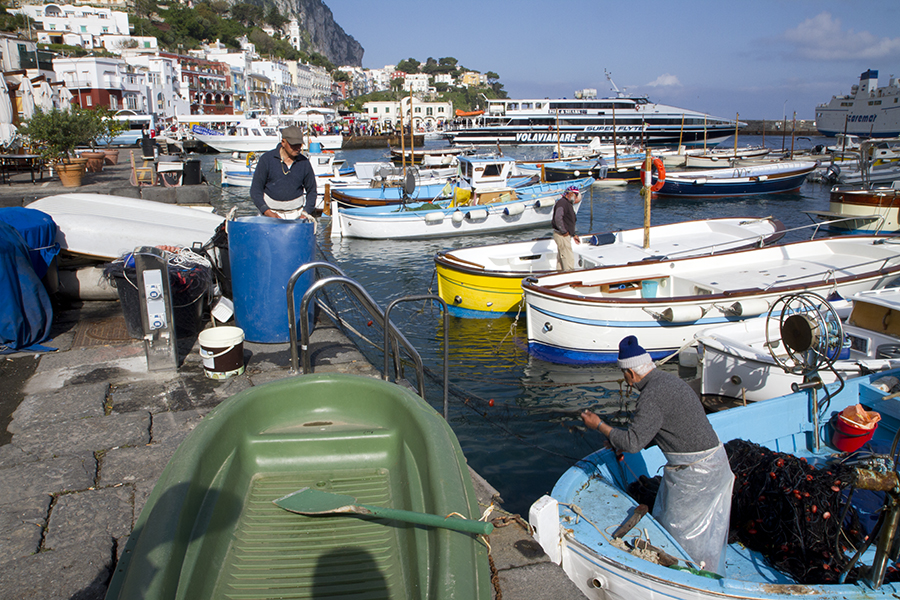


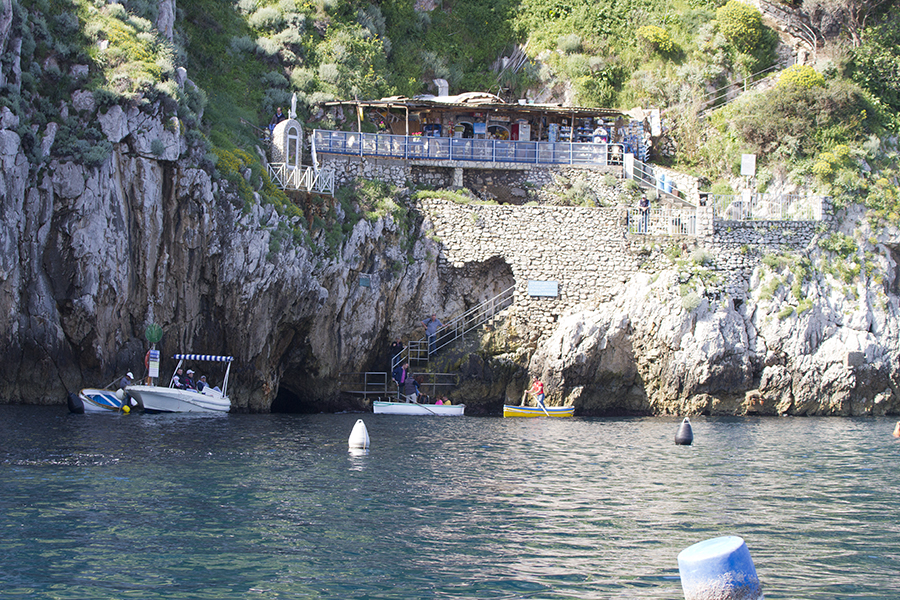
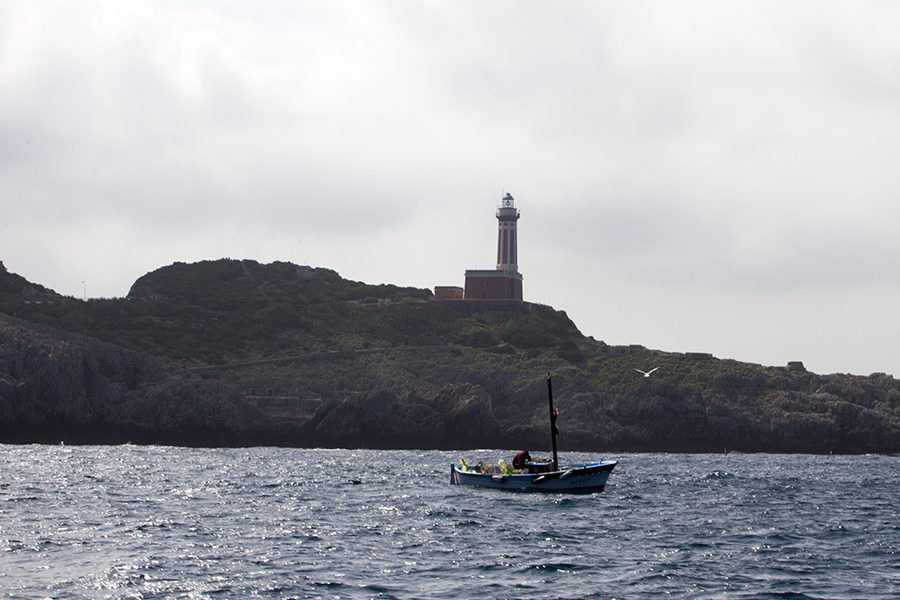
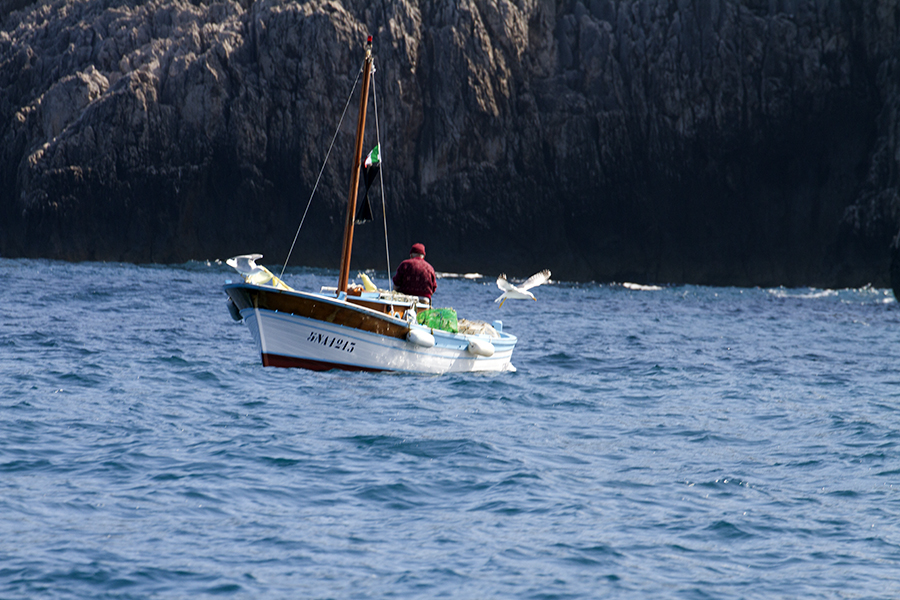
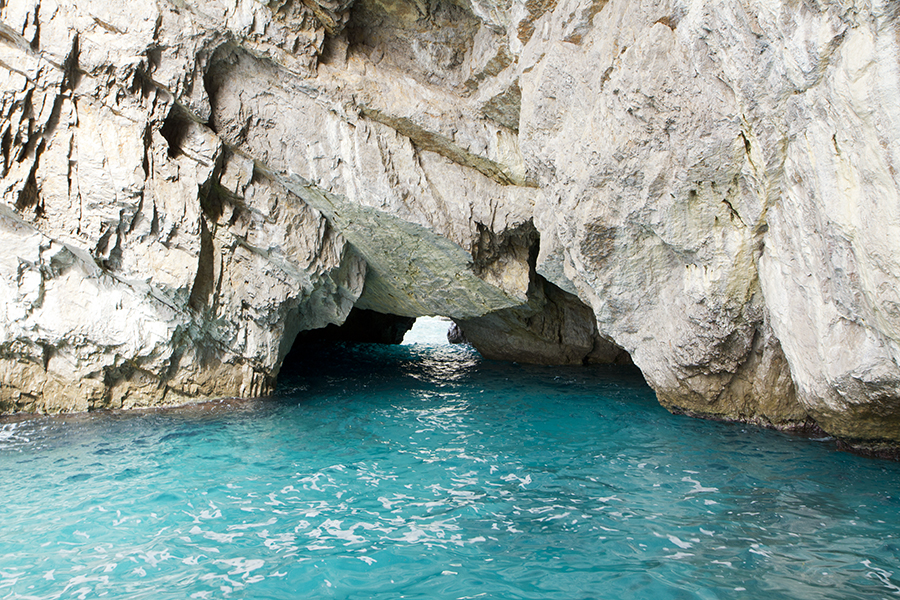
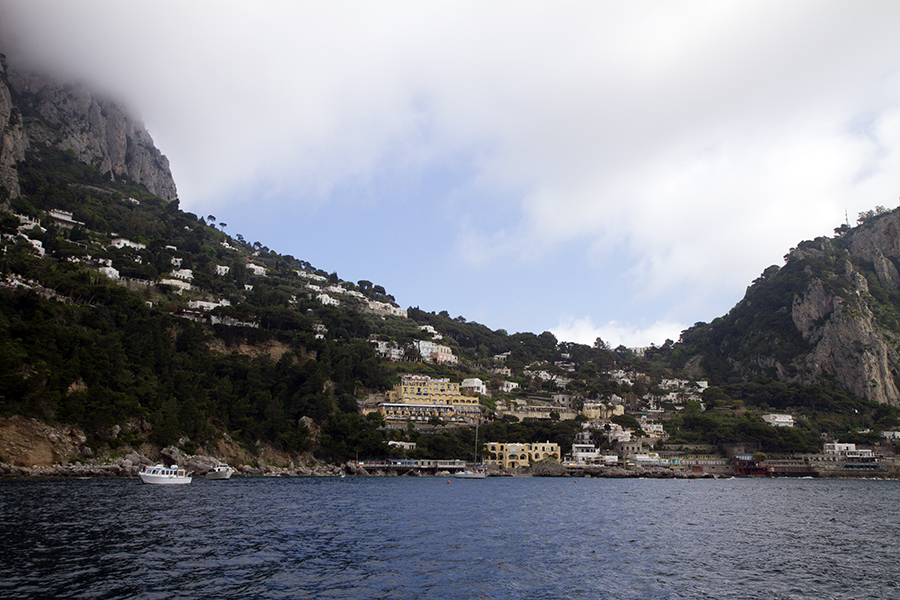

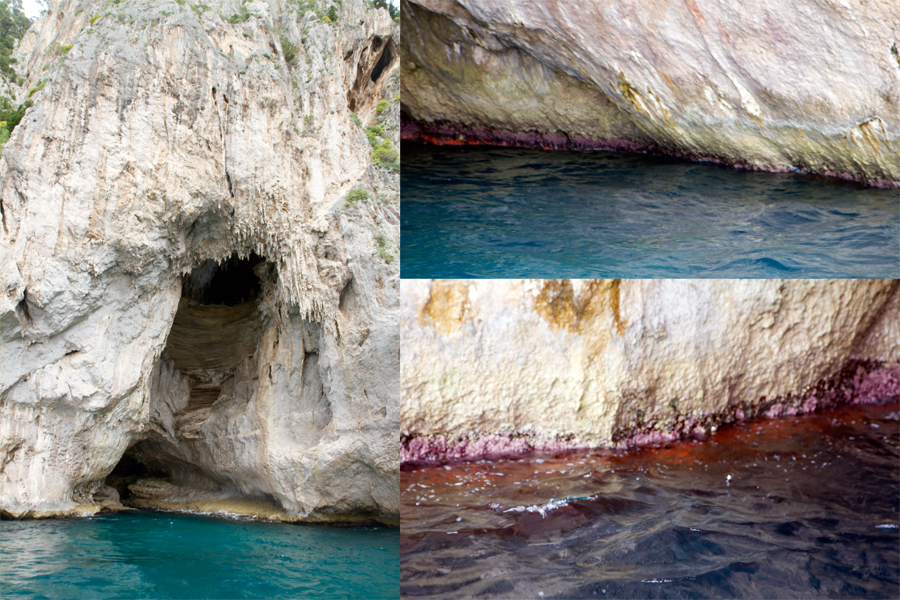



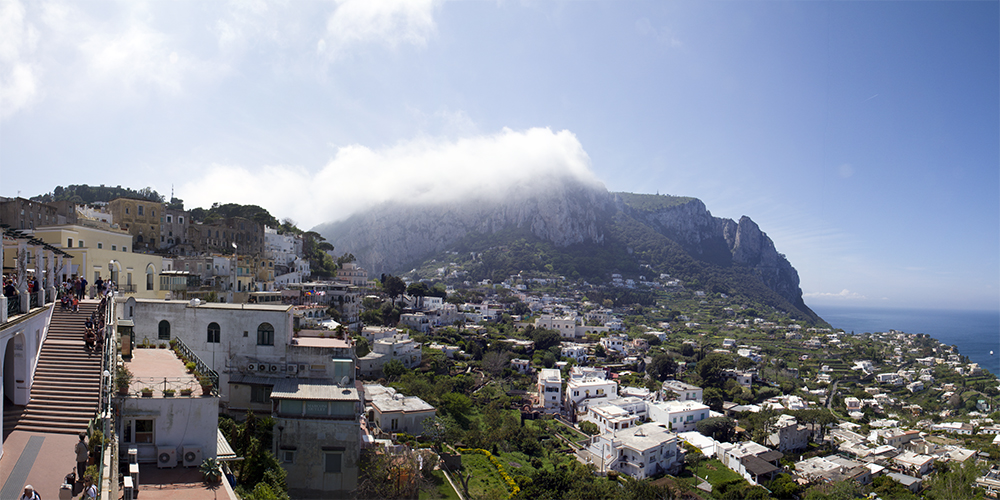


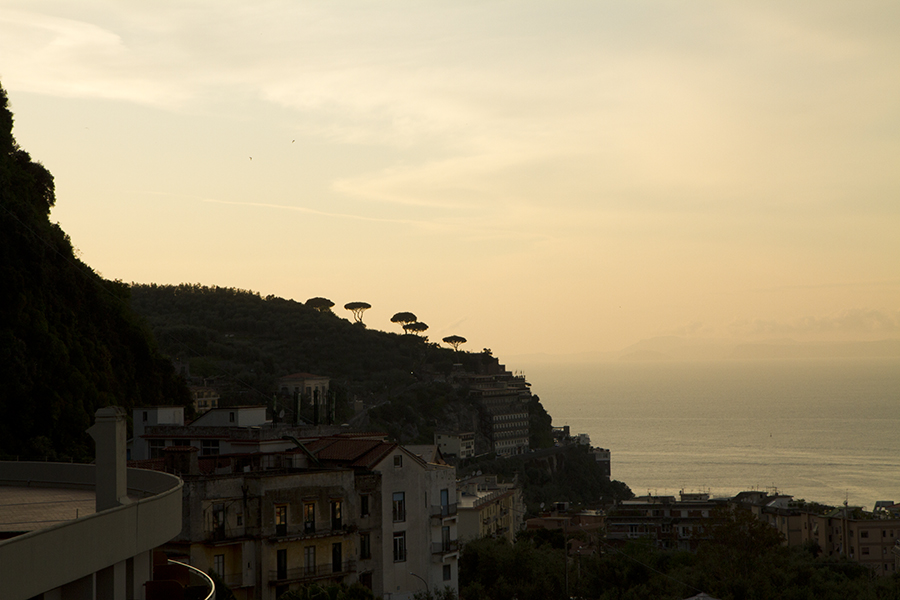
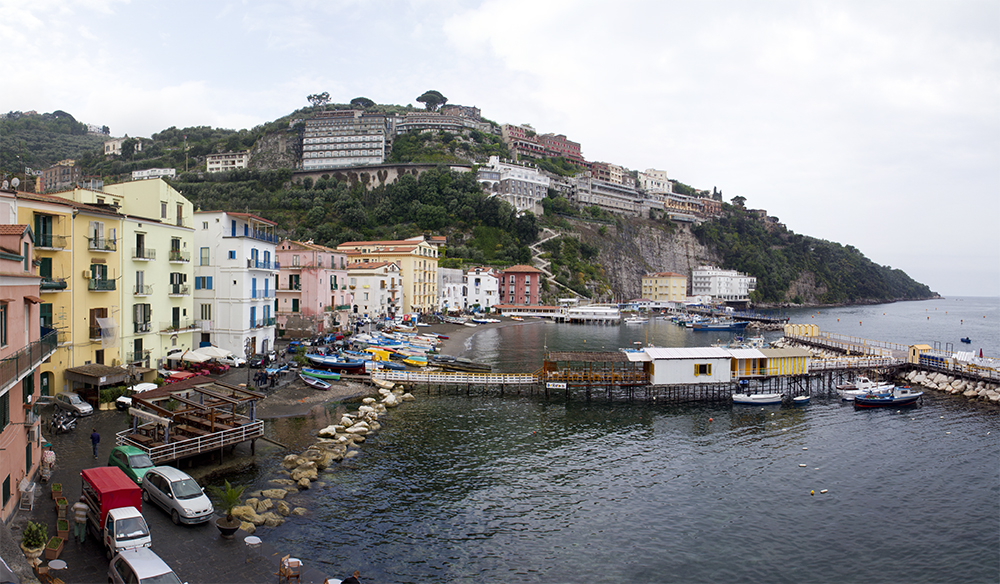
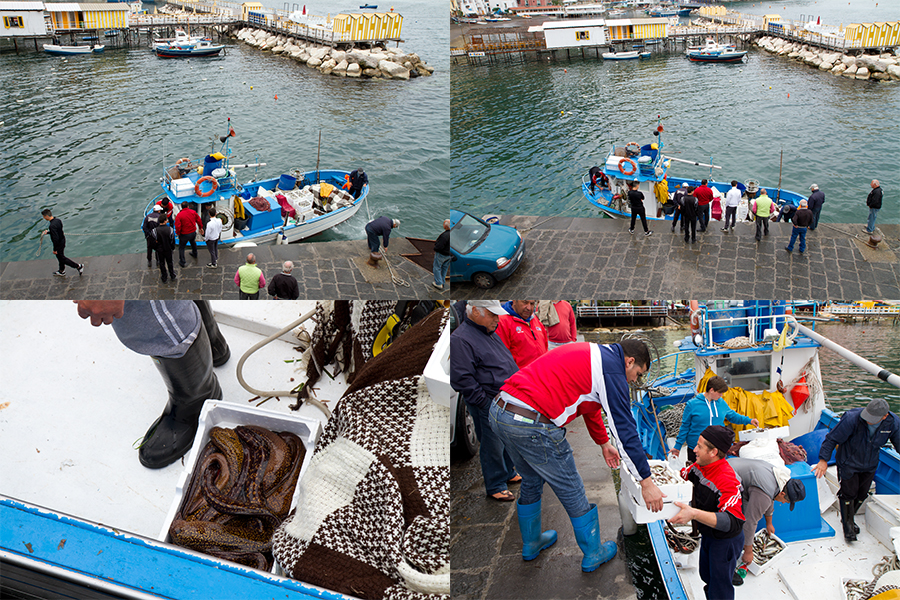





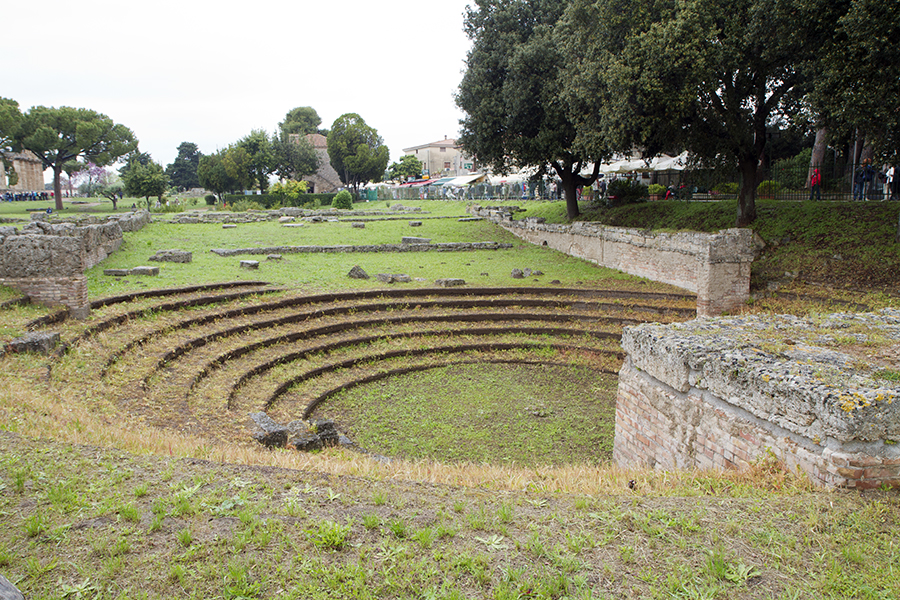

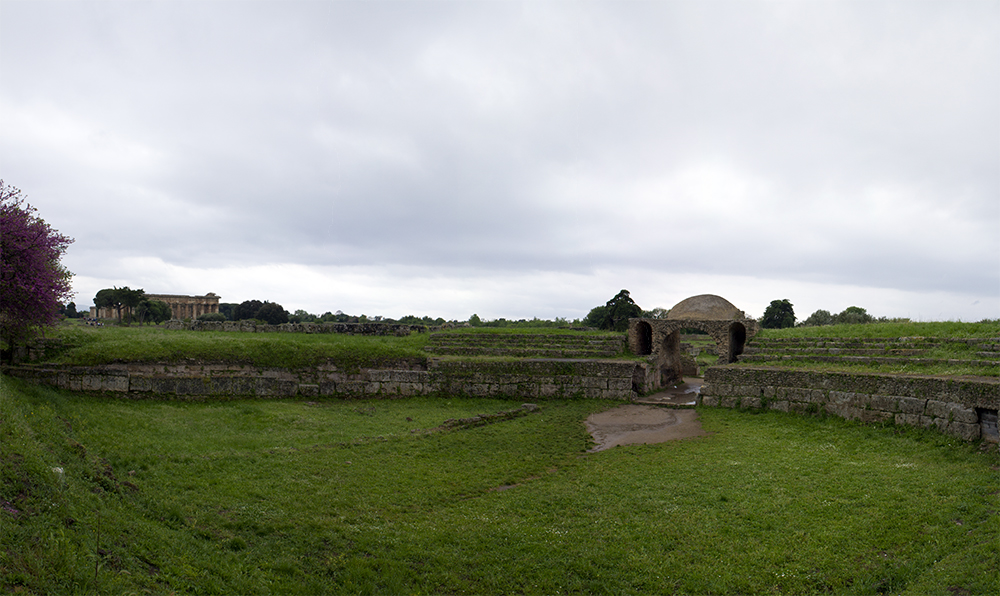
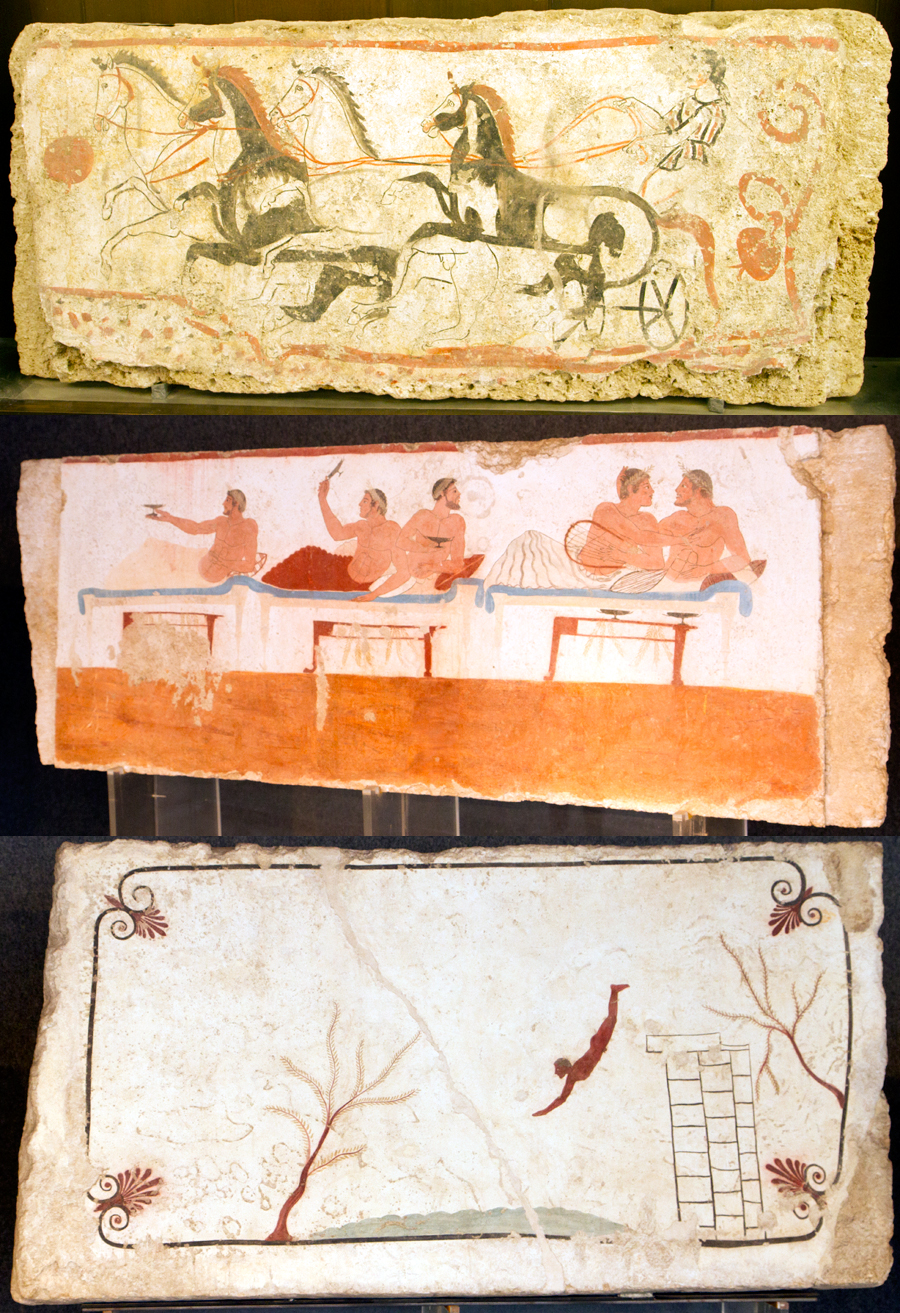







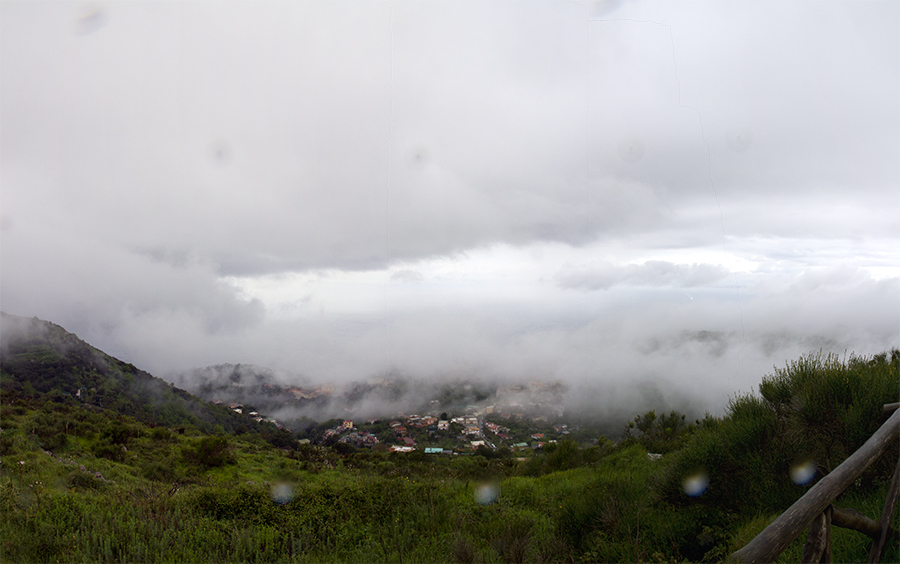
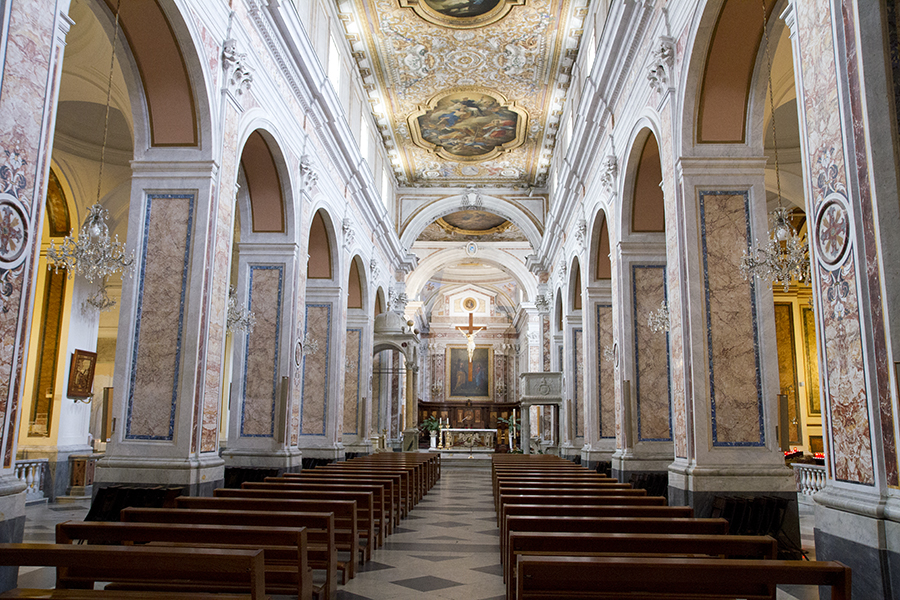
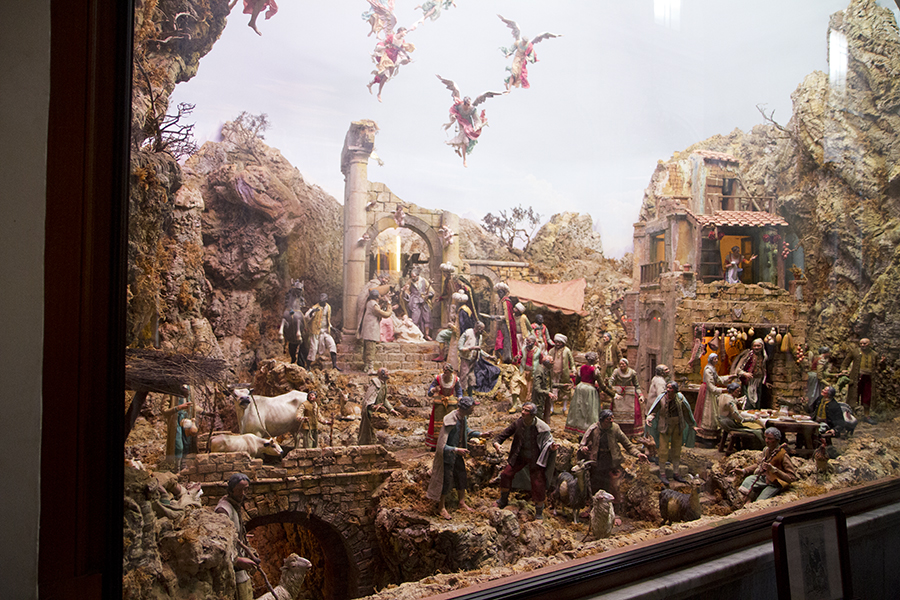



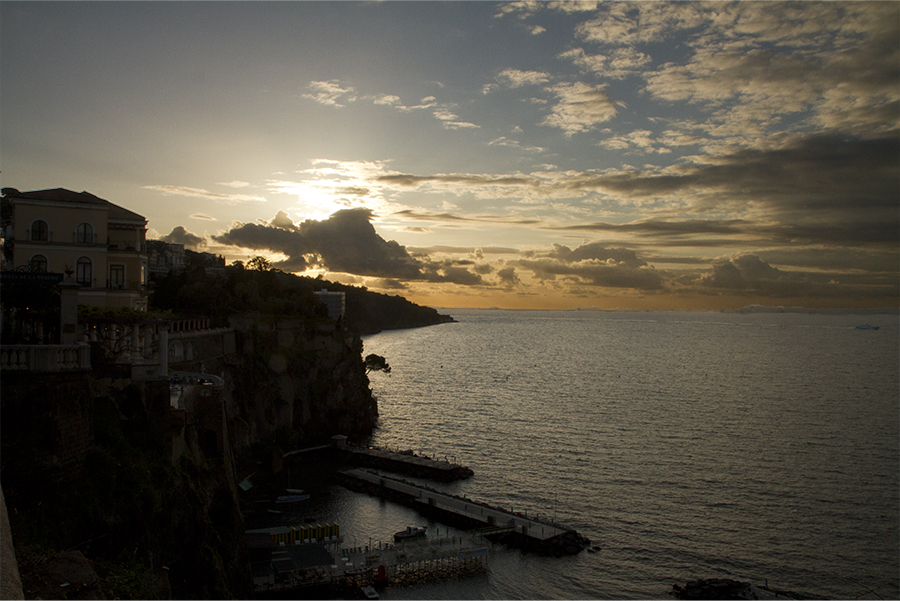

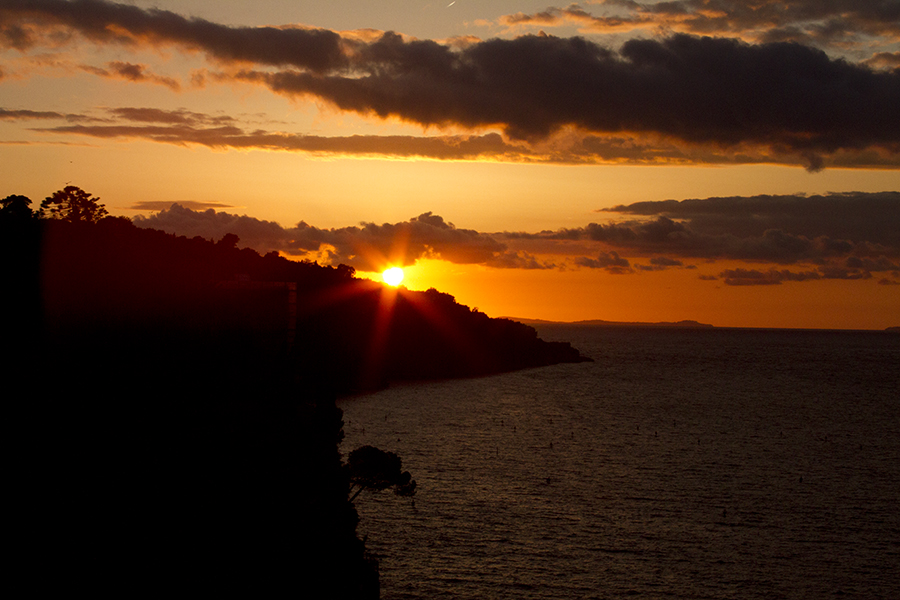



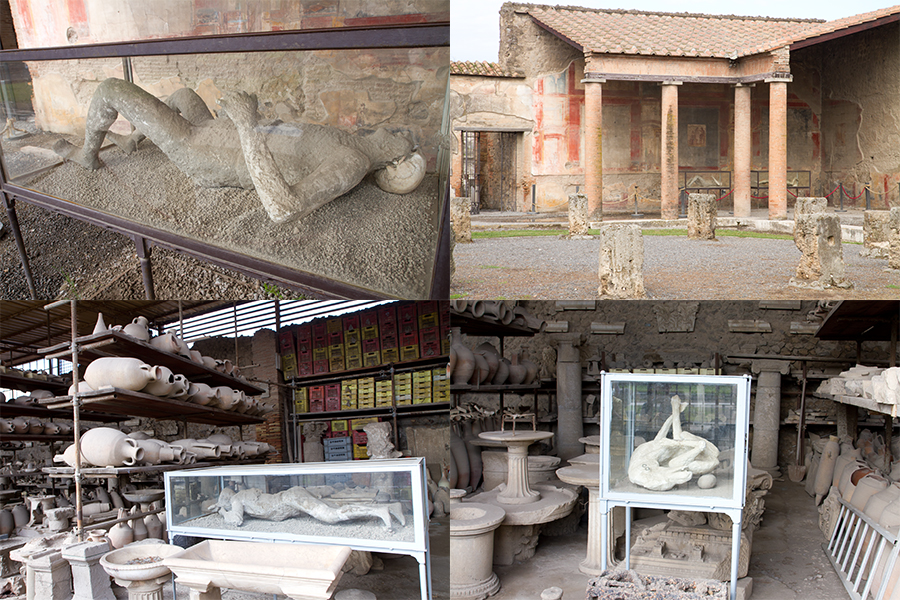
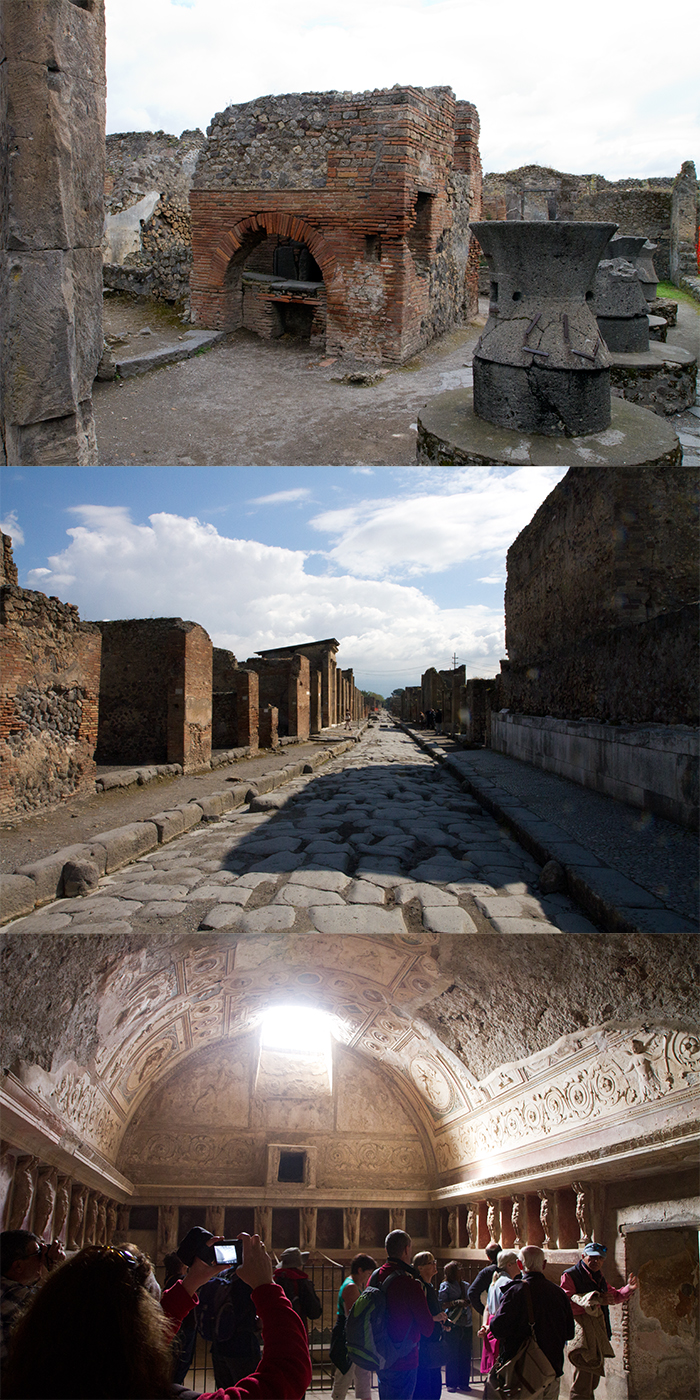
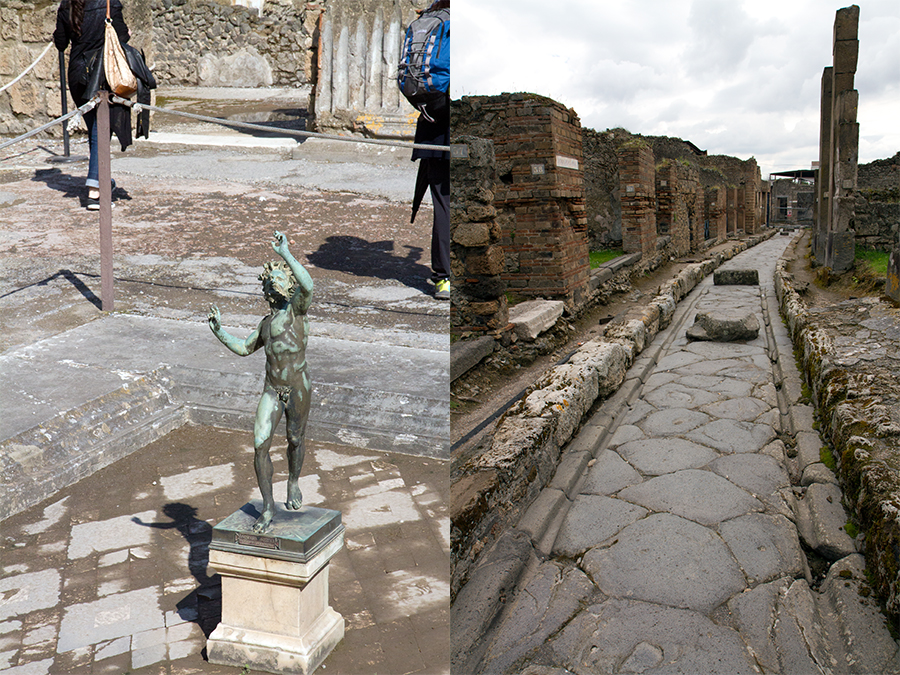

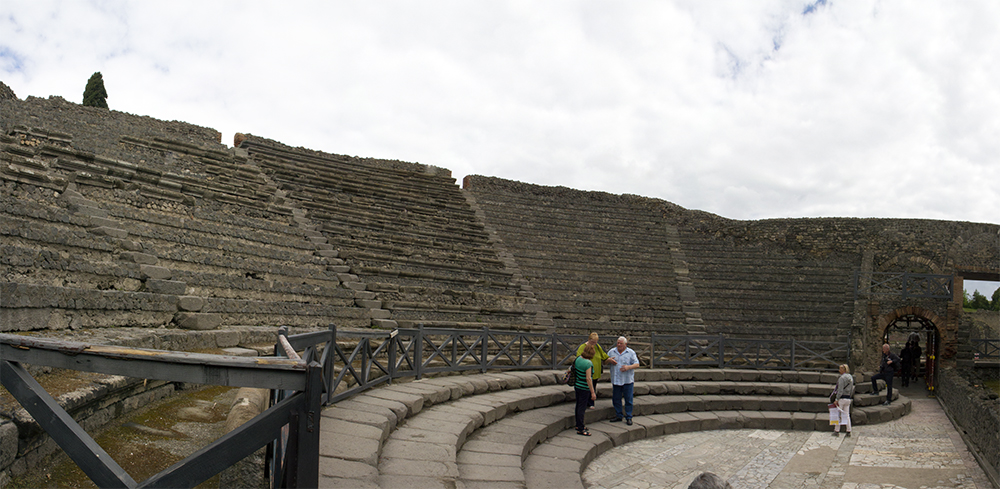
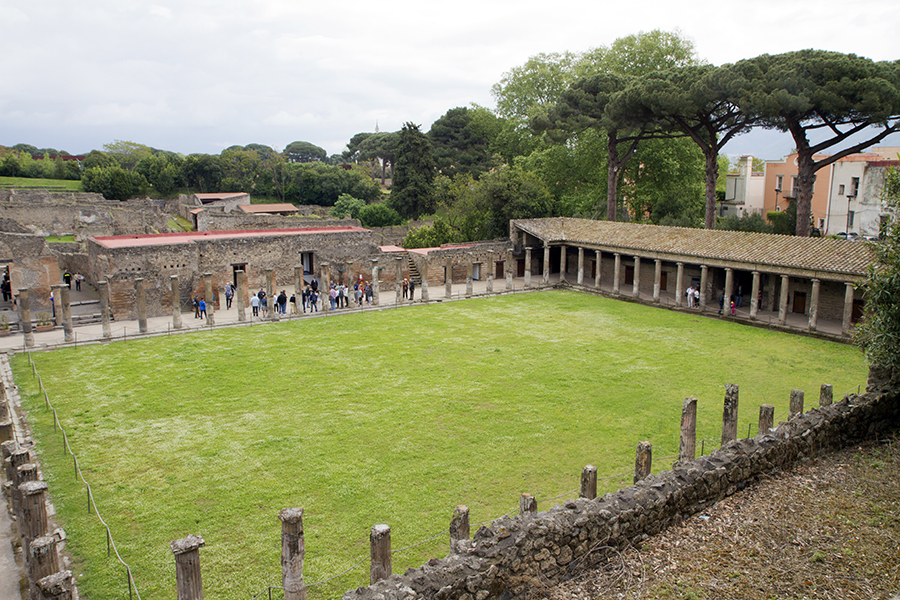
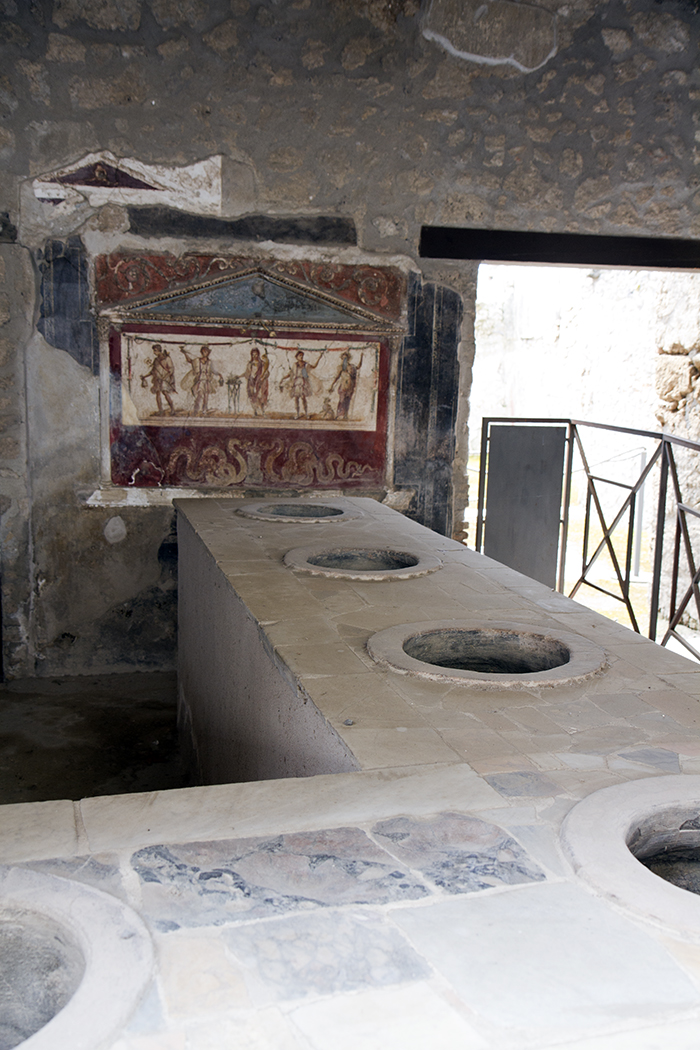


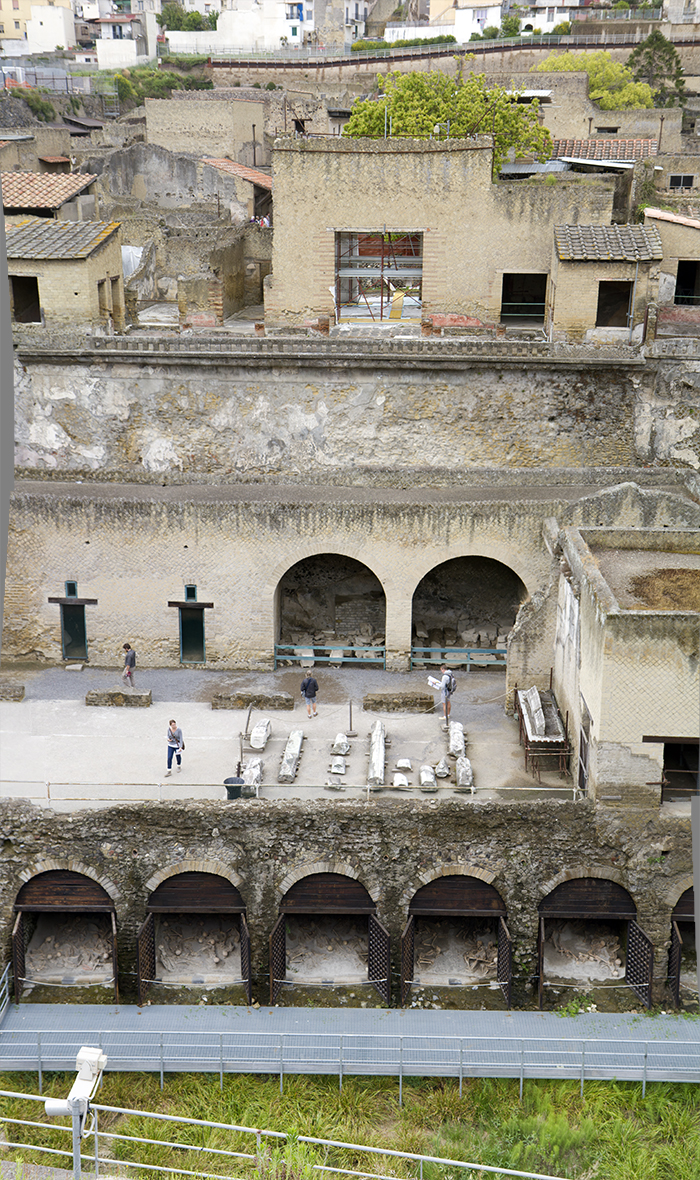
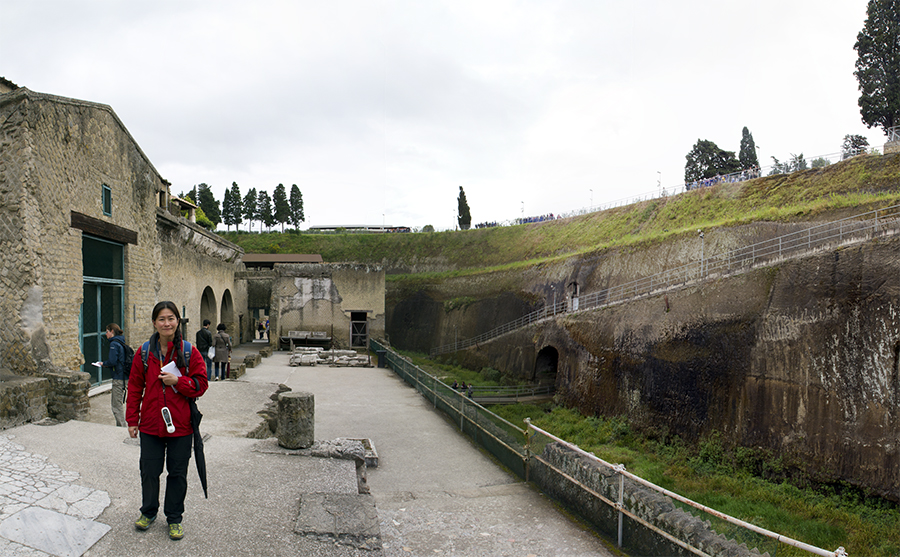
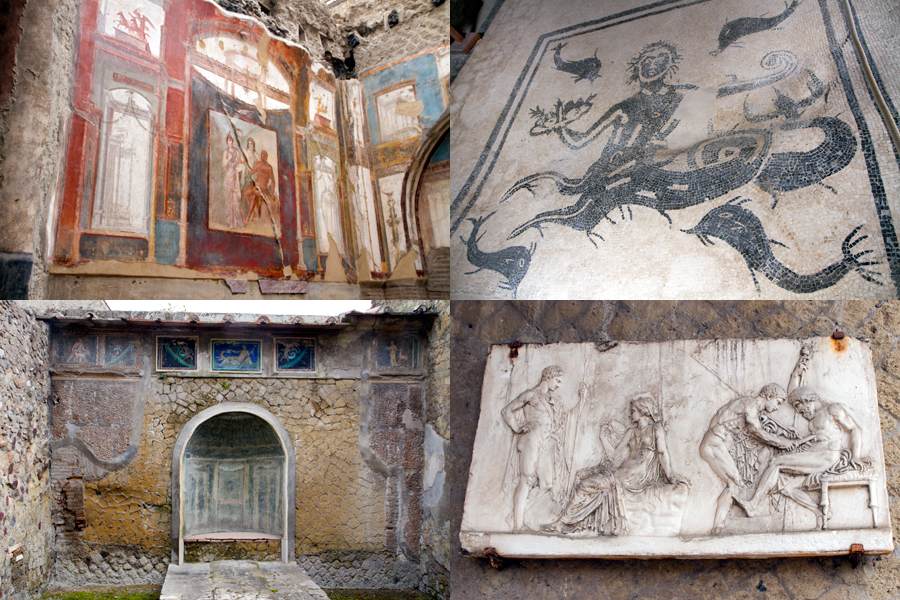
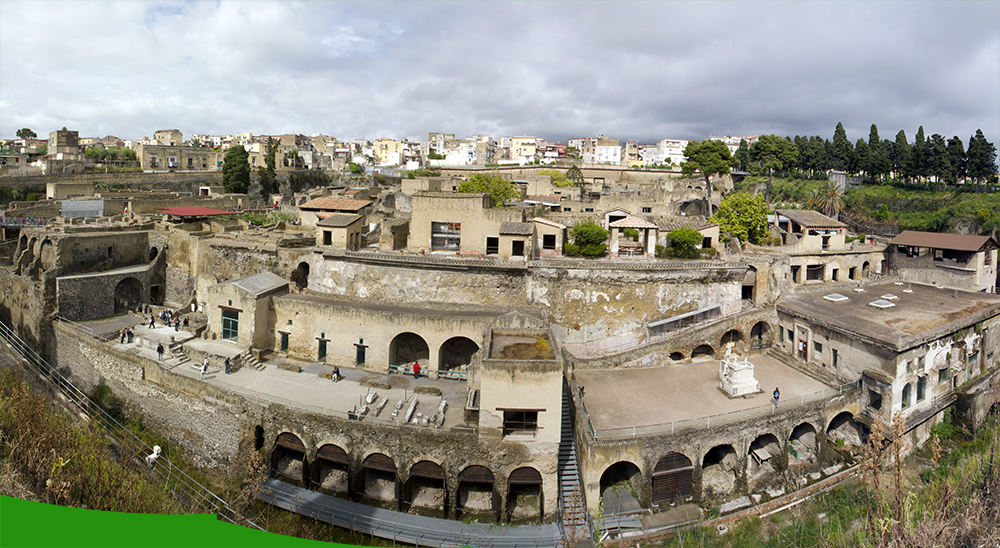
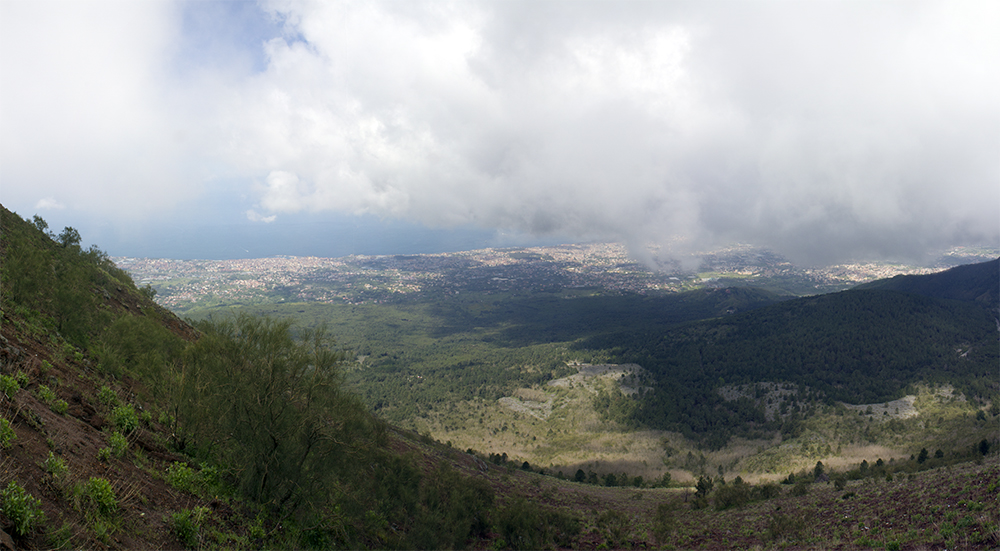

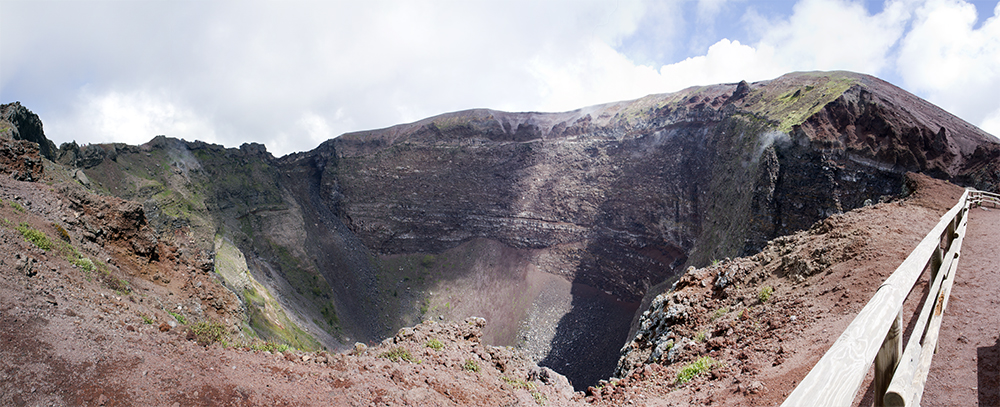


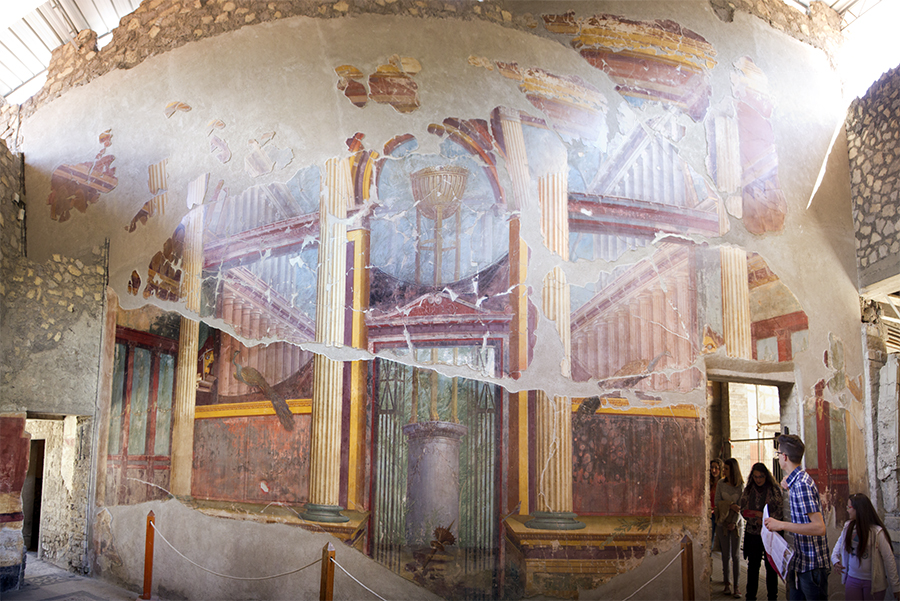
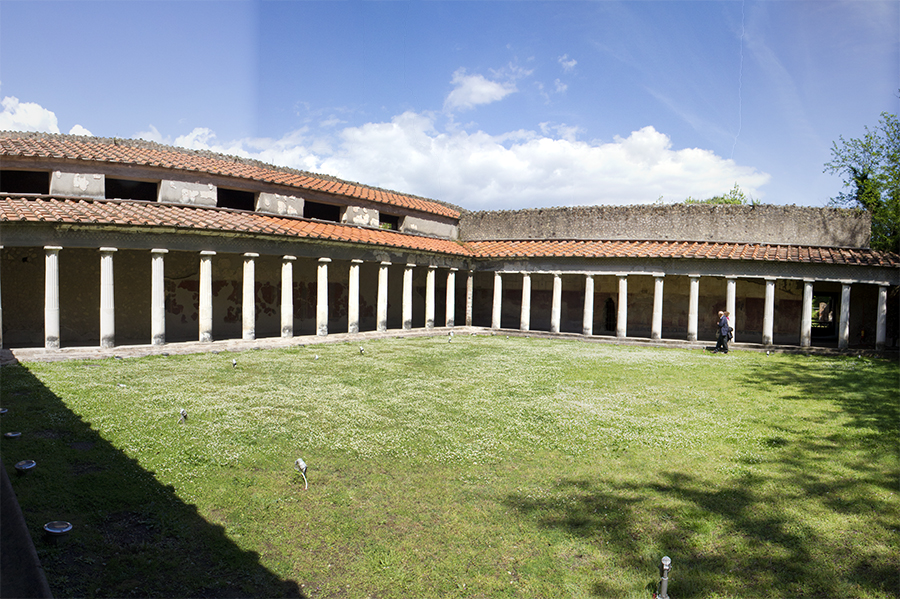
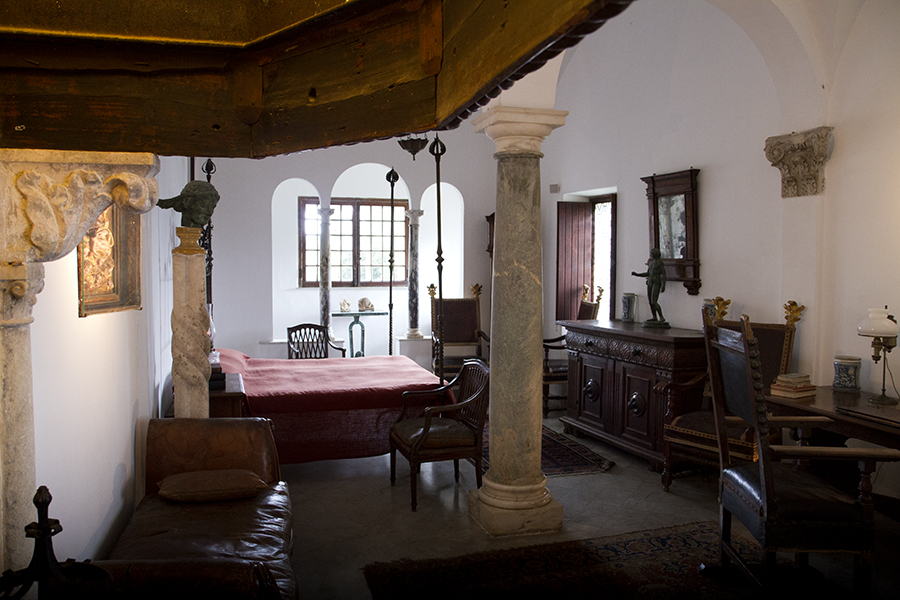



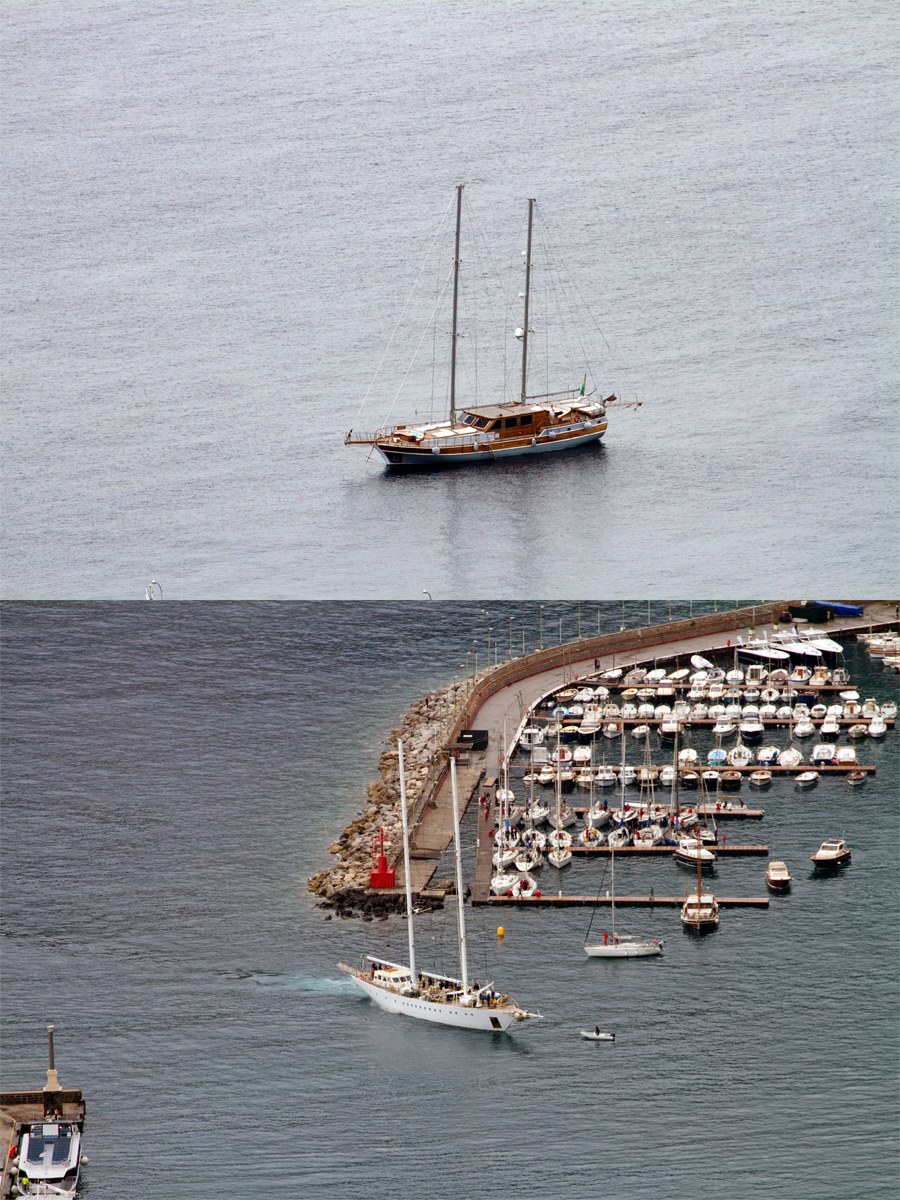


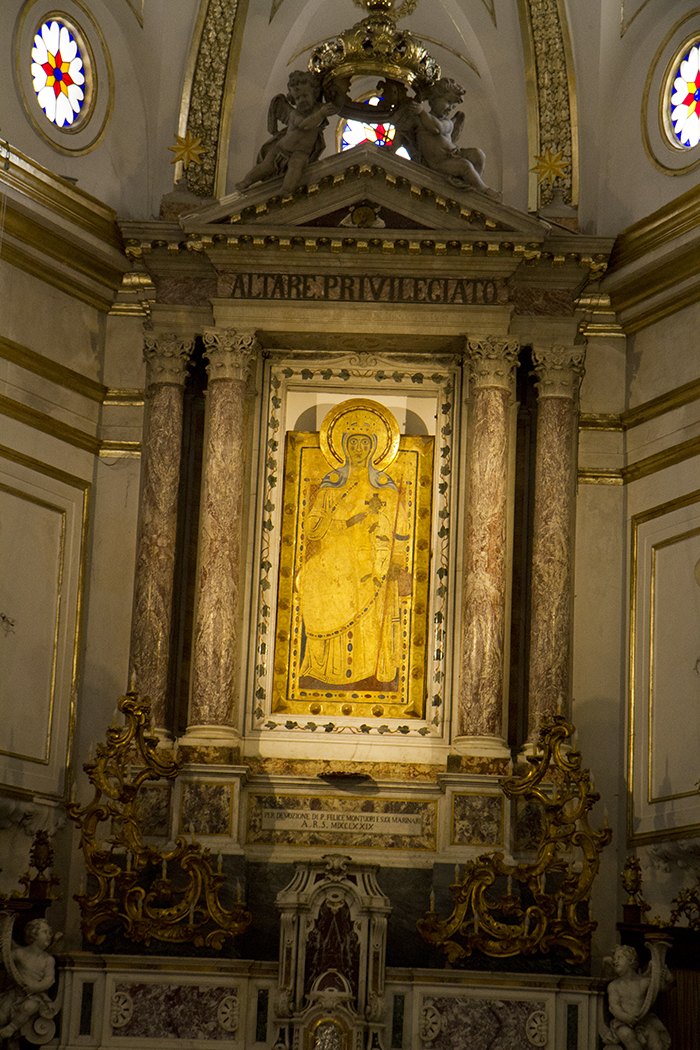

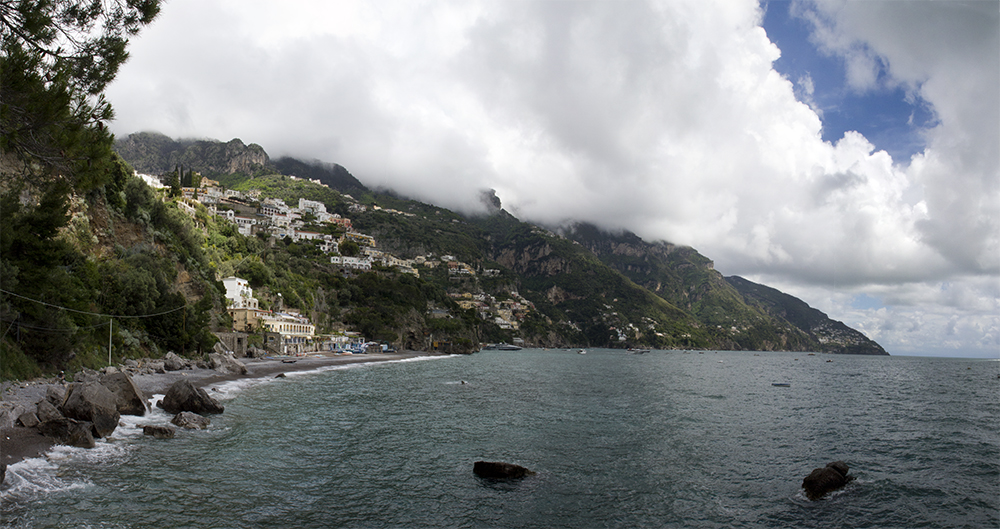
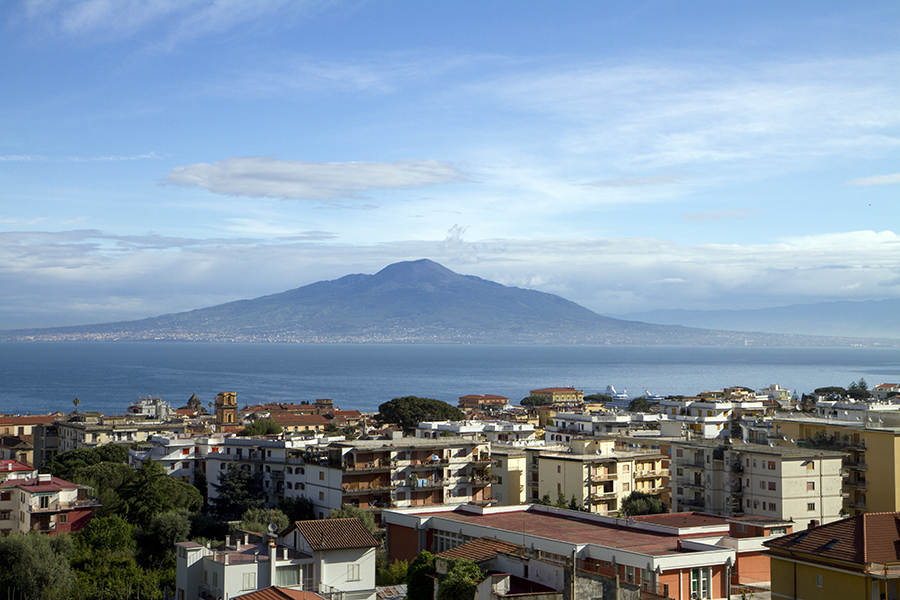
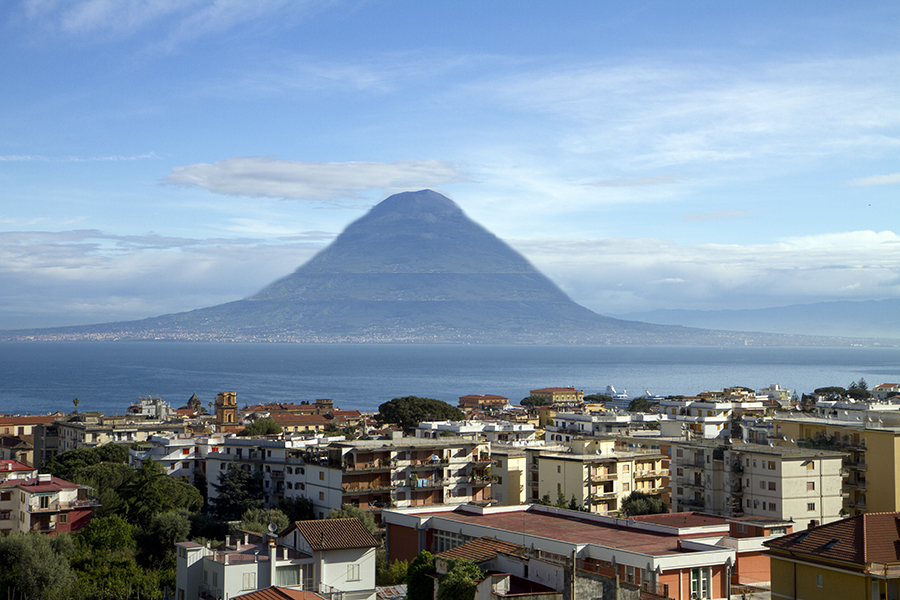
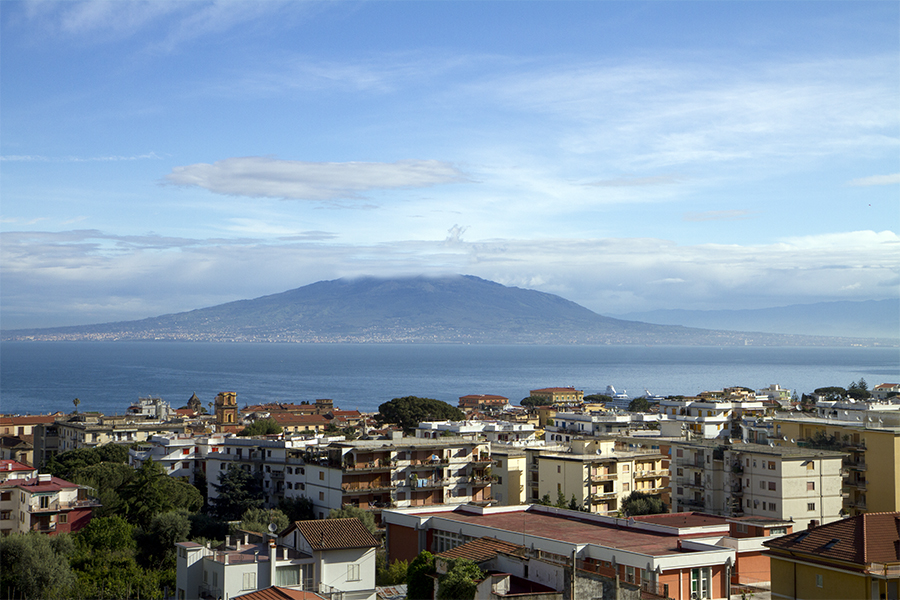
I wasn’t able to go to the Amalfi Coast with my sister so I certainly enjoyed your dinner view….as opposed to “a taste”. Wonderful pictures and writeup Pierre. I will put this on my bucket list. Many thanks.